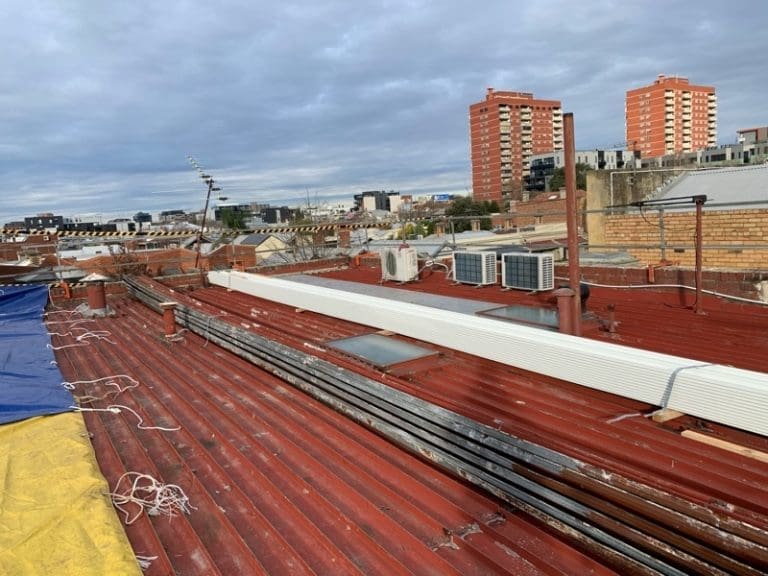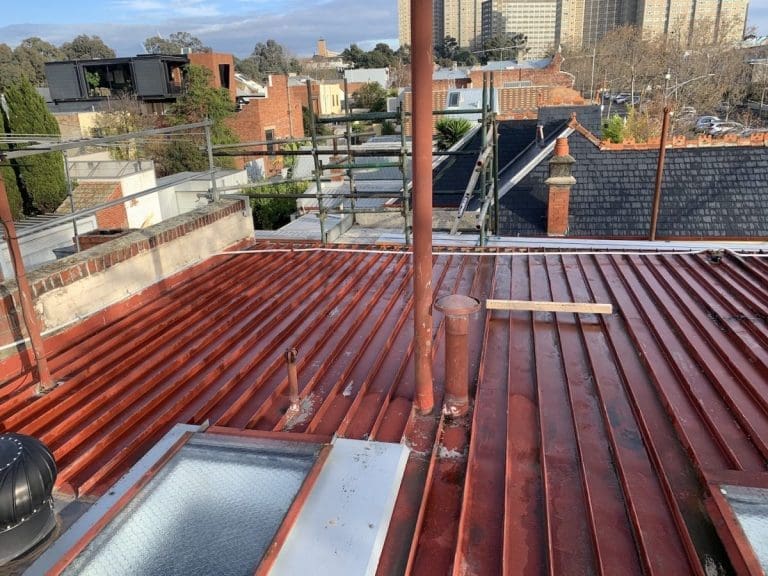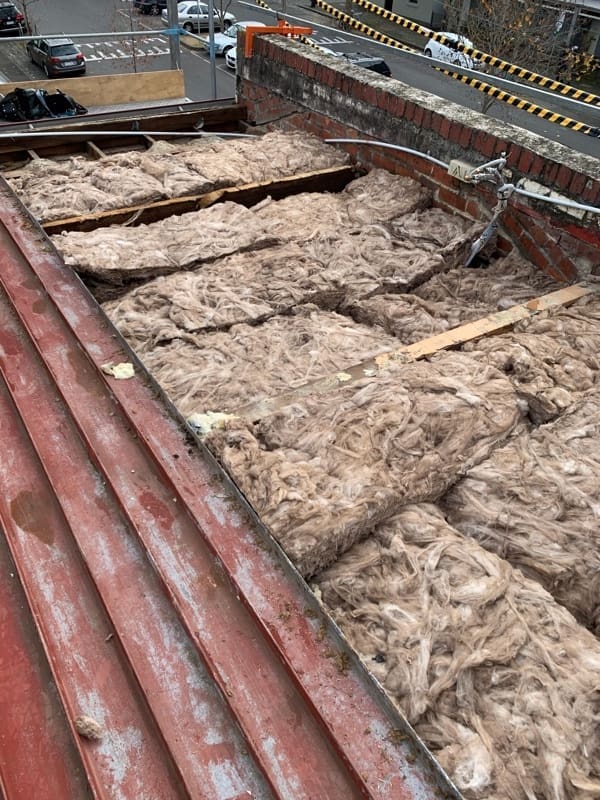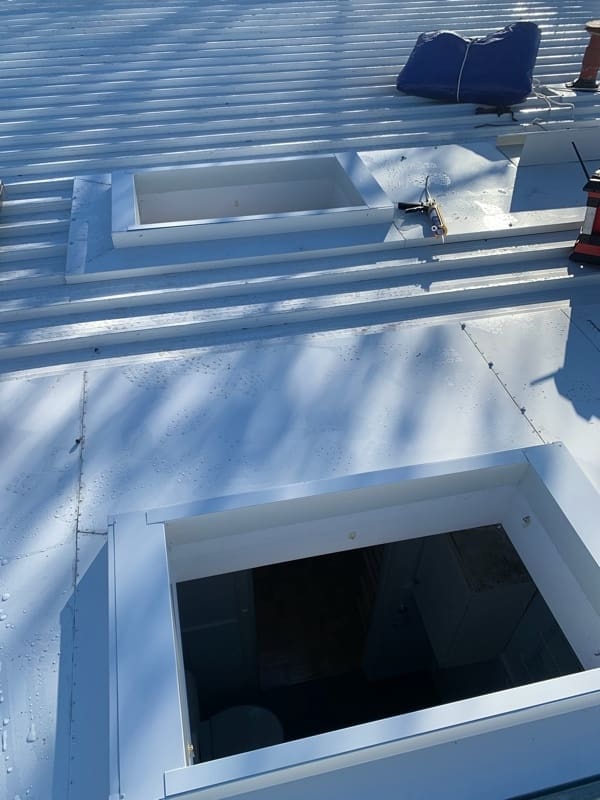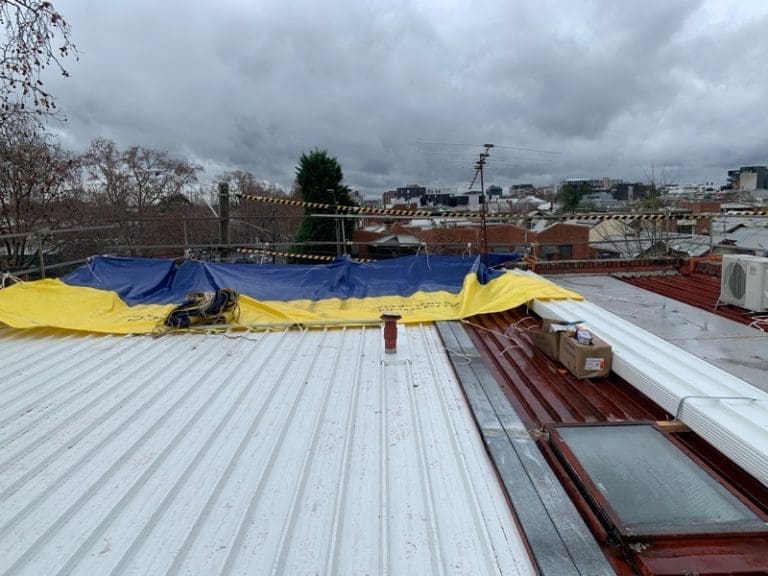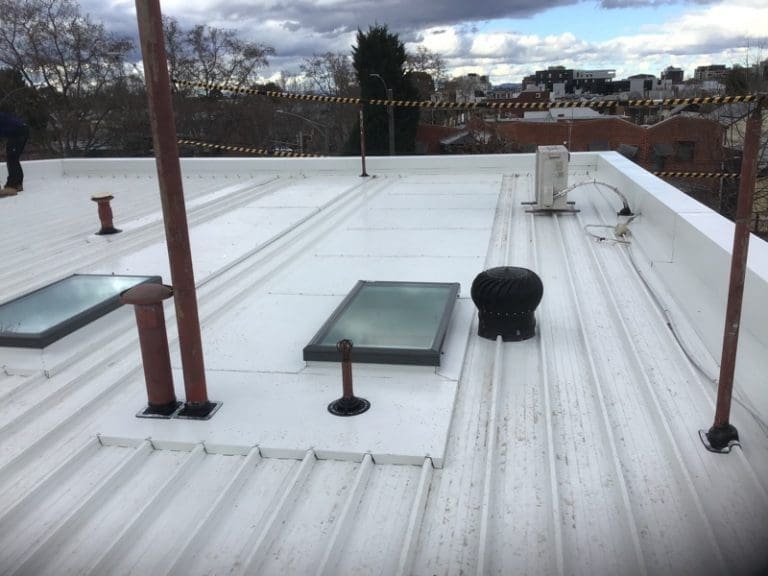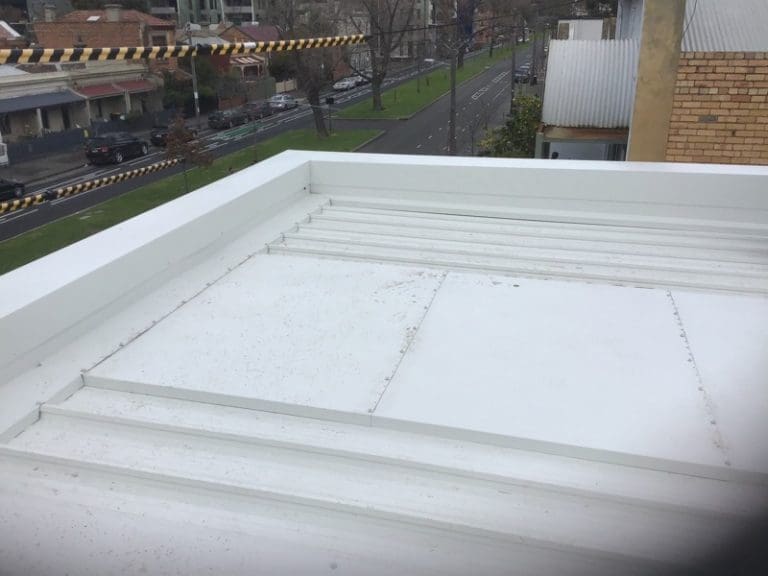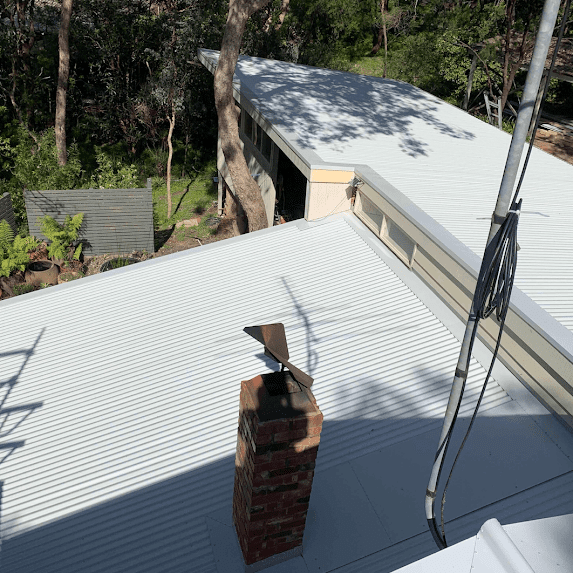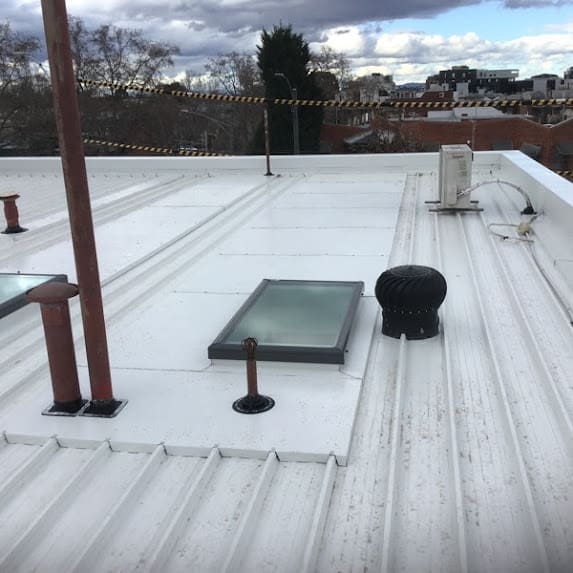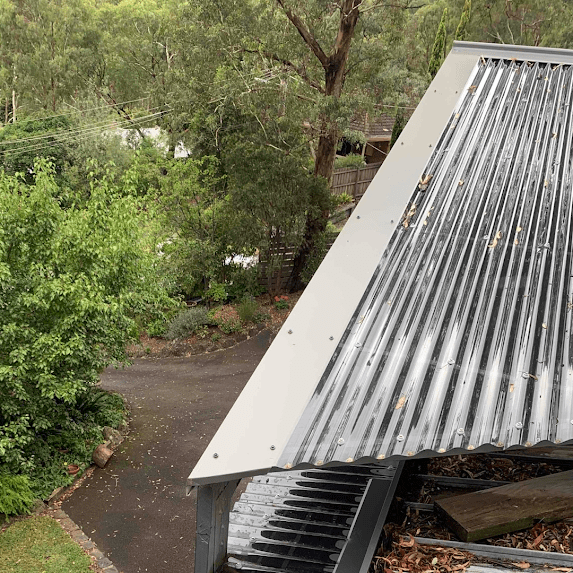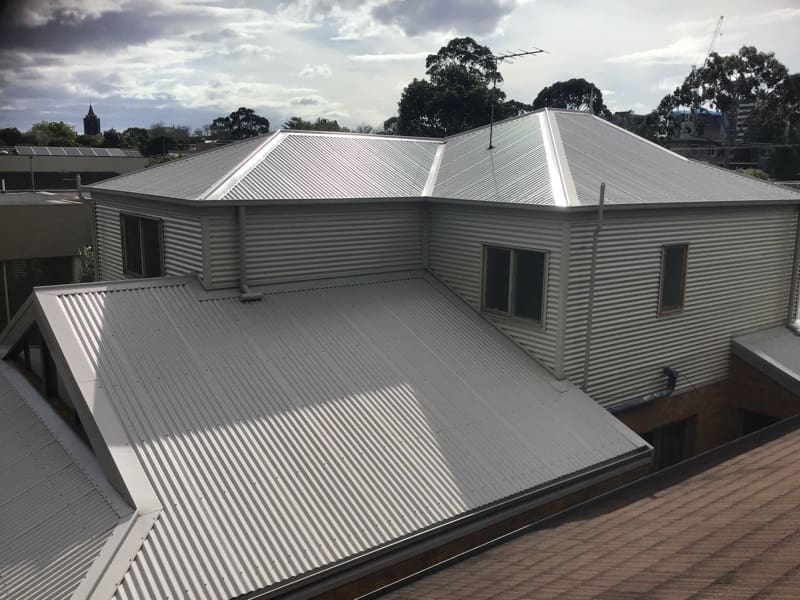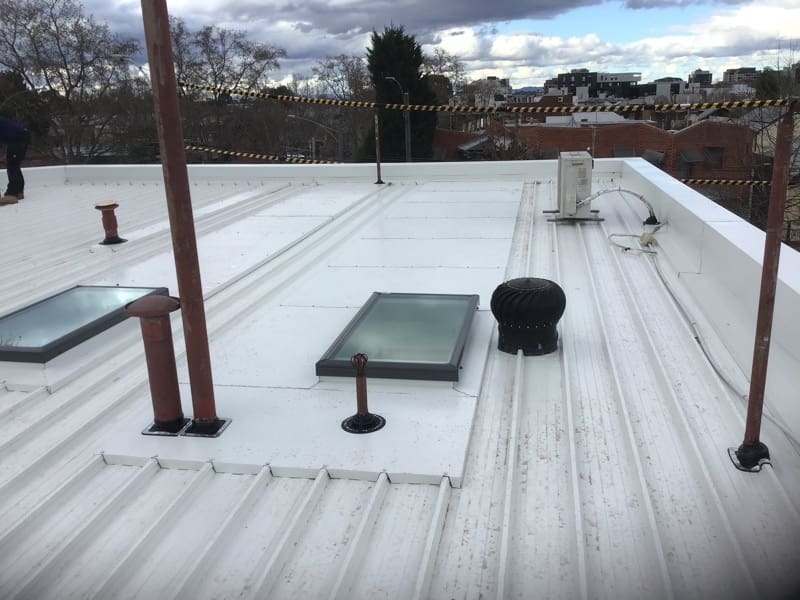
Contents:
- What’s the Difference Between Building and Planning Permits?
- Do You Need a Building Permit to Replace Your Roof?
- How to Apply for a Building Permit
- Seamless Roof Replacement: How Roofrite Took Care of All the Details for The Client
Planning your own home renovations can be both exciting and overwhelming. While choosing materials and imagining the final look is the fun part, there’s an essential first step you can’t skip: getting the right permits. Whether you’re fixing a leaky roof or planning a full roof replacement, understanding what permits are required is important to avoid facing any unexpected costs down the road.
According to the Australian Bureau of Statistics, Aussie homeowners spent nearly $1 billion on alterations and additions to residential buildings’ in December 2023 alone. With building approvals hitting a 15-month high in September 2024, it’s clear that more and more Australians are investing in improving their homes. If roofing repair is on your list, ensuring that the work is done right–and legally–should be top of mind.
If you have no idea where to start with permits, don’t stress–we’re here to help. In this guide we’ll answer all your questions about building permits for roofing repairs and replacements, and how to get them.
What’s the Difference Between Building and Planning Permits?
So you may have heard about both building permits and planning permits–but what’s the difference, and when do you need them?
A building permit is a document issued by your local council or a private building surveyor to confirm that the proposed building works comply with the proper regulations.
On the other hand, a planning permit is a legal document that allows you to use or develop the land in a certain way, for e.g., for a new home, renovation, or extension. If a planning permit is required, you’ll need to get it from your local council before applying for a building permit.
When do you need a building permit?
According to the Victorian Building Authority, “all building work requires a building permit, unless an exemption exists under the regulations.”
When don’t you need a building permit?
Not all home renovation jobs need a building permit, especially if the work is minor in nature. Work that may be exempt includes:
- Any internal work that doesn’t significantly impact plumbing or electrical systems.
- Constructing or demolishing a freestanding building, such as a private garage, carport, pergola, or shed–providing it meets certain criteria for floor area, height, and material.
- Alterations that don’t compromise the building’s structural integrity or safety, public safety, or the street alignment.
Do You Need a Building Permit to Replace Your Roof?
When it comes to repairing or replacing your roof, determining if you need a building permit depends on a few things:
1. Your local council’s regulations
Building permits and regulations vary from council to council, so it’s essential to check with your local council to ensure you’re compliant with the rules governing your area.
As one builder shared on Reddit, “The issue with councils/shires is they can all differ slightly in their requirements/interpretations. Your best option is to contact them and get a permit if required, or get in writing their permission to alter without one.”
2. The scope of work involved
If you’re only looking to make minor repairs, such as repairing or retiling part of the roof, or replacing roofing materials with the same material, then you typically won’t need a building permit.
However, major repairs or structural changes will typically need a permit. These include:
- Replacing your entire roof with a new material.
- Replacing structural timber like battens, rafters, joists.
- Changing the slope or roofline of your roof.

3. The type of roofing material.
The roofing material you’re using can also influence whether you’ll need a permit. For instance, replacing your roofing with a different material (such as tile to metal sheeting) requires additional considerations due to the structural impact.
“A building permit is required for tile to tin replacement in Victoria. There is no doubt about this. I confirmed with the VBA and Darebin council. Whitehorse will be no different,” shared one user on the AusRenovation Reddit thread. “Further to this you should ensure that you have a contract which complies with the Domestic Building Contracts Act.”
Another user on the thread added:
“You will need advice and a sign-off from a structural engineer. In case you’re wondering, a tiled roof breathes in the wind whereas a metal roof has uplift suction.”
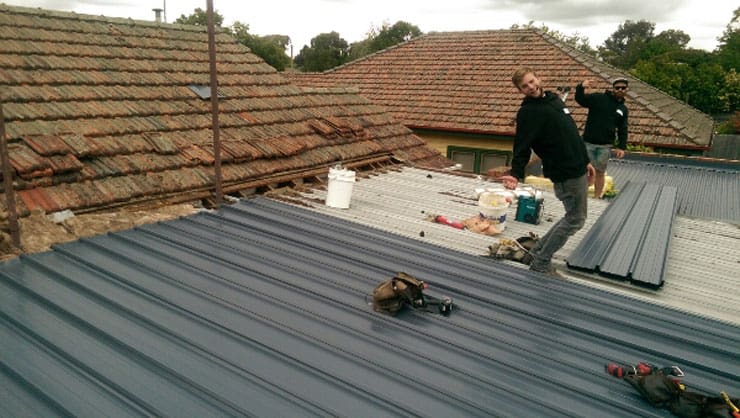
4. If your roof has asbestos
In Victoria, there are limitations on how much asbestos you can remove without a licence. Exceeding these limitations will require the services of a licensed asbestos removalist to help you out.
Repairing your roof? Here’s some permits you may need.
Now that you have an idea of whether you need a building permit to repair your roof, what about other permits? When working on your roof, particularly in urban areas like Melbourne, various permits may be needed–especially if your project involves public land, power infrastructure, or excavation.
Here are the most commonly requested permits we secure for jobs that impact public land:
Council Permits
For jobs that impact public spaces, local councils often require specific permits. These may include:
- Road Closure: Necessary if the project impacts traffic flow.
- Access Equipment Permits: For equipment like scissor lifts and cherry pickers.
- Crane Permit: Required when a crane is needed on-site (may also require road closure).
- Footpath Occupancy: If the work requires temporary use of public walkways.
- Parking Space Occupancy: To secure parking for workers.
- Temporary Protective Structure Permit: To install hoardings, gantries, or scaffolds on a public road or footpath. This is essential for ensuring pedestrian safety and proper site access.
Note: Each council may have its own requirements, so it’s best to check with your local council on their specific requests.

Power Company Permits
When working near power lines or electrical infrastructure, safety is vital. We obtain the following permits from energy companies Citipower & Powercor:
- No-Go-Zone Permit: This permit allows us to work within restricted areas near power lines and other electrical infrastructure.

Other Permits and Compliance Checks
Roof repairs may also require:
- Before You Dig Request: If excavation is needed to install below-ground drainage pipes, we’ll need to check for subsurface utilities like gas, electricity, water, and telecommunications to avoid any disruptions or accidents.
- Certificate of Electrical Compliance: For roof jobs like tile to tin roof replacements, this certificate ensures that any new insulation or electrical work meets Australian standards.
What happens if you don’t get a permit?
You want to make sure you do your due diligence in the planning stage, so that you have peace of mind when the building starts. If you don’t get a permit when you need one, the penalties can be severe. According to Victoria’s Building Act 1993, it is a criminal offence to carry out building work without the proper permits and it can result in a fine over $70,000.
Building officials may also decide to demolish any work you have completed or void your home insurance, so it’s really important to make sure your permits are all in check prior to starting any work.
If you’re not sure which permits you should get, you can always consult a licensed roofing professional to help you figure out and apply for the necessary permits.
How to Apply for a Building Permit
So, you’ve determined you may need a building permit, but how do you actually get one? To apply for a building permit you have to take the following steps:
1. Appoint a Registered Building Surveyor
Your first step is to engage a registered building surveyor. They will oversee the process and process your permit application.
2. Gather All Necessary Documents
Collect all the required documentation to support your application. This typically includes detailed plans, specifications, and any other supporting material requested by your council or surveyor.
3. Submit An Application Form
Fill out the application form and submit it along with the designated fee.
4. Wait For Council Review
Your local council will review your application to make sure it complies with local building regulations.
5. Receive Notice
After the review period, you’ll be notified whether the council has approved or denied your application. They may request additional information to process your permit.
Obtaining a building permit can be a time-consuming and lengthy process that often requires several documents to be submitted. For a smoother experience (and less headaches), consider working with a licensed roofing expert who can guide you through each step and save you precious time.
How long will it take for the permit to be issued?
As of April 2024, the average time for direct building approval across all councils in Victoria was 168.7 days. However, this number typically reflects new builds, especially for projects involving multiple dwellings.
One Melbourne architect reported waiting almost 840 days to gain approval for a development of four townhouses. While simpler projects like roof repairs or replacements generally take less time, processing times can still vary depending on the complexity of your project and your local council’s workload.
Seamless Roof Replacement: How Roofrite Took Care of All the Details for One Client
Inner city roof replacements can be a headache. Between council permits, obtaining a No Go Zone Permit to work near power lines, and safely managing trades, it’s easy to feel overwhelmed. That’s why when you choose a licensed roof plumber like Roofrite the entire process is managed for you, so all you need to do is admire the end result.
The Challenge: A Corner Property with Complex Requirements
Recently, Roofrite was called to replace a Colorbond roof on a two-storey corner property in Carlton. While the roof itself wasn’t particularly complex, the project involved multiple moving parts that needed expert coordination. Here’s what made this job unique:
- Permits Galore: Working near power lines and occupying a laneway meant we had to get both a No Go Zone permit from the power supplier (which required two site meetings) and a Road Occupation/Lane Closure permit from the local council.
- Safety Concerns: There were multiple safety concerns with power lines located only 6.4 metres away from our work, a scissor lift in operation, and work taking place on the roof at height.
- Roof Access: Carrying materials up to the roof was going to be difficult as the property was two-storeys.
- HVAC Location: The location of the air conditioning units on the roof meant we had to remove them first before we could replace the roof sheets underneath.
- Tenant Communication: The property housed three tenants, so clear communication was vital for both the occupants and the landlord.
How Roofite Made a Difficult Process Easy
From start to finish, we handled all the details, so the client didn’t have to. Here’s how we simplified the process for them:
1. Obtained permits and managed traffic
We secured the necessary council permits, which also required a detailed Traffic Management plan and Public Liability Insurance with a $20M minimum. On the day of the lane closure, we arranged signage and a traffic controller to manage safety.
2. Safe and efficient material handling
A scissor lift was used to transport roofing materials to the first-floor patio before they were carried up to the roof. We also installed scaffolding across the back of the first floor rear patio and a stair access tower, which was essential for safely reaching the roof while carrying down tools and small materials.
3. Addressed safety head-on
To work safely near the power lines, we coordinated with the power supplier to cover them with battens (also called tiger tails) and scheduled spotters to help identify hazards involving the scissor lift. We also set up scaffolding and guardrails to ensure our crew’s safety while working on the roof.
4. Managed HVAC adjustments
We organised an HVAC plumber to disconnect, relocate, and reconnect the air conditioning units on the roof to enable us to replace the roof sheets under them.
5. Tenant and landlord communication
Prior to work starting, we prepared and hand-delivered notification letters to nearby tenants about the upcoming works. We also kept all the tenants and the landlord in the loop throughout the process, minimizing disruptions and ensuring everyone was on the same page.
The final project budget: Around $55K including all permits and equipment hire.
The Result: A Stunning New Colorbond Roof
By the end of the project, the Carlton property had a brand-new Colorbond roof, complete with sleek, double-glazed Velux skylights that replaced the dome skylights. The best part? The client enjoyed a hassle-free renovation, thanks to booking the job with Carlton roofing experts Roofrite. He had nothing more to do than organise the payment and admire the final photos from his holiday location.
“Thanks for being super organised and professional throughout.”
The Client
Let us do the difficult work for you.
When you hire us, you don’t have to worry about permits, coordination, or the complexities of inner-city roof replacements. Our team of licensed roof plumbers (and we have a registered builder for planning permits) handles it all so you can just sit back and enjoy the results.
Ready to simplify your roof replacement? Contact us today on (03) 9499 8059 for a casual, no-obligation chat to find out how we can help with your roofing repair and get all the permits sorted.
Date
Jul 08, 2021
Read Time
12 minutes
Services
Roof Replacement
